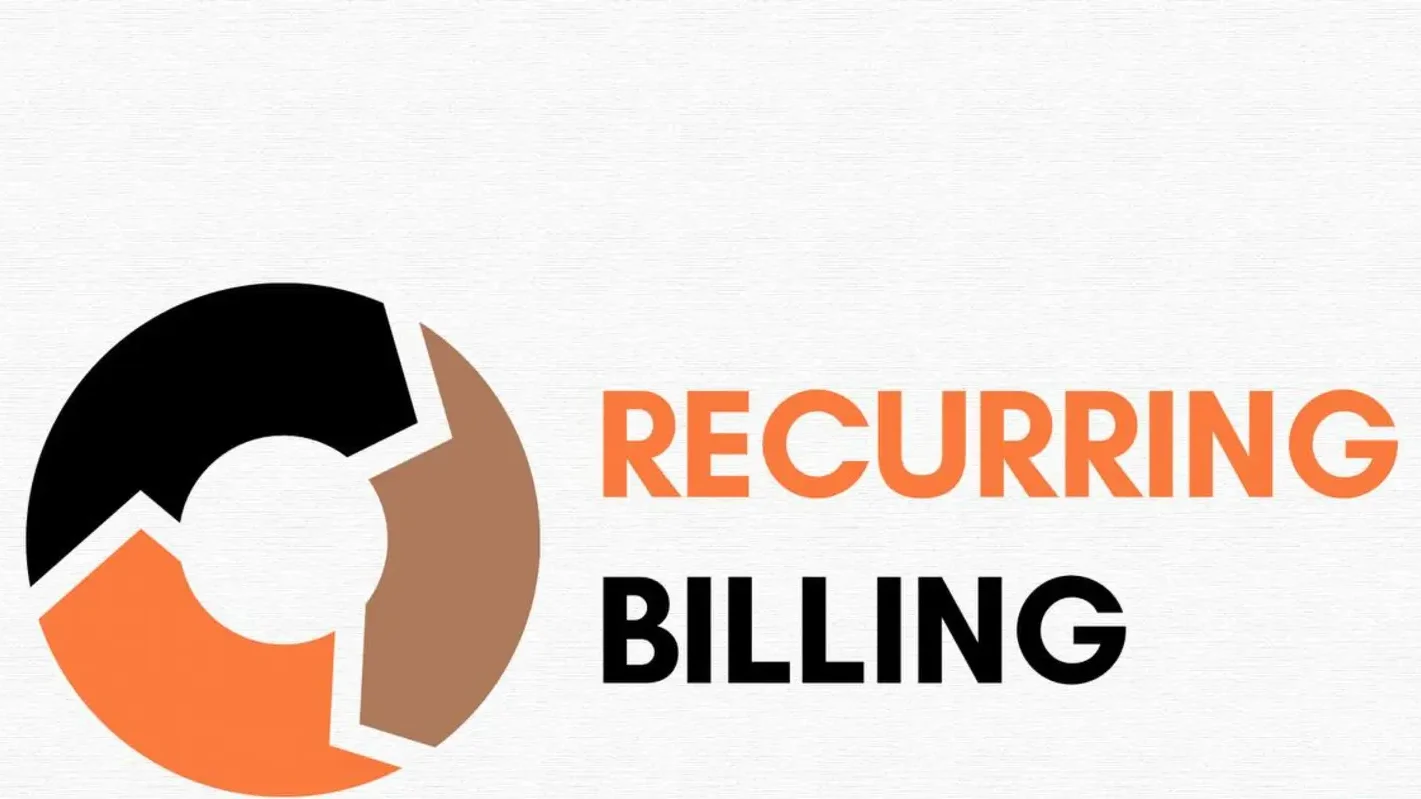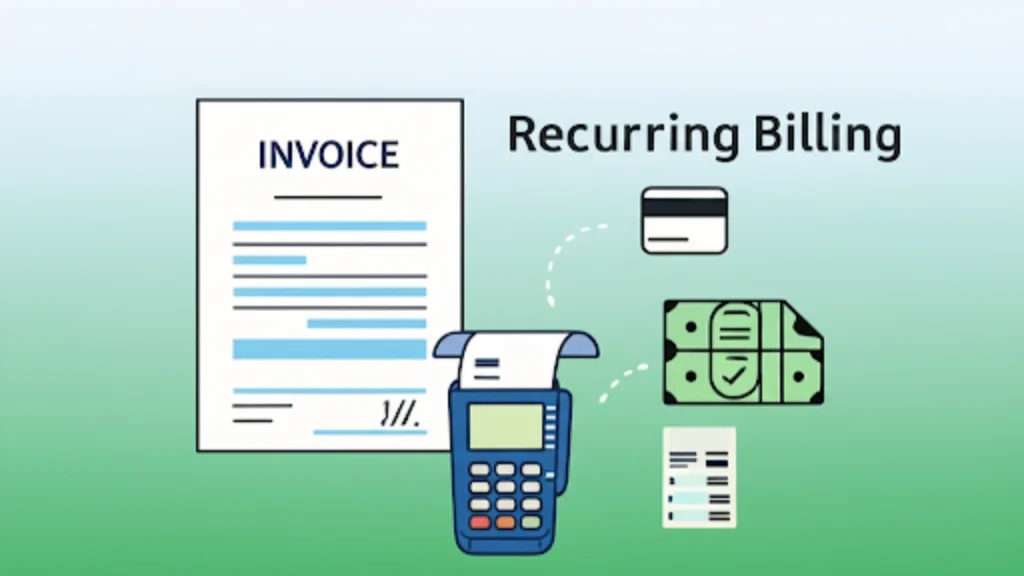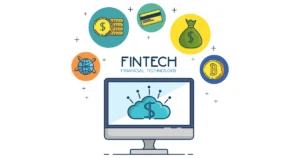
Did you know that the subscription economy, sponsored by recurring billing, is predicted to grow to $1.5 trillion by 2025? Recurring billing has, in fact, emerged as a top strategy for businesses seeking to establish predictable revenue streams and enhance customer relationships.
Let us examine the definition, types, examples, benefits, and drawbacks of recurring billing. In addition, I will recommend five recurring billing software options to get you started!
Overview of Recurring Billing
Recurring billing is the automated process of billing customers at regular intervals, usually weekly or monthly, for a continual supply of their preferred goods or services.
It is commonly used in subscription-based businesses where subscribers allow business owners to automatically deduct payments for subscriptions from their accounts periodically.
Examples of Recurring Billing
To furnish your understanding, let us explore 5 common examples of recurring billing:
- Streaming Services: Subscription-based streaming platforms like Netflix and Disney+ charge customers a recurring monthly fee to access their library of movies and TV shows.
- Software Subscriptions: Software-as-a-service companies like Adobe charge customers a recurring monthly or annual fee to access professional-grade software tools for graphic design, video editing, and more.
- Gym Memberships: Gyms usually offer membership plans where customers pay a monthly fee to access gym facilities, amenities, and classes.
- Utility Bills: Utility companies, such as electricity, water, and internet service providers, use recurring billing to automatically charge their customers for their monthly usage.
- Subscription Boxes: Subscription box services like Birchbox and HelloFresh deliver curated products, such as beauty samples or meal kits, to their customers’ doorsteps monthly or quarterly for a recurring fee.
Are Recurring Billing and Subscription Billing the Same?
The terms “recurring billing” and “subscription billing” are often used interchangeably because they are so similar. In fact, you could regard subscription billing as a type of recurring billing.
Both recurring billing and subscription billing automate the billing process, store customers’ payment information, and periodically withdraw consistent payments from customers’ accounts. Also, most recurring billing management software is subscription billing management software.
However, while recurring billing refers to recurring charges for any business, subscription billing specifically refers to recurring charges for subscription-based businesses.
Also, while subscription-based businesses usually use multiple pricing plans, businesses that adopt the recurring billing model rarely offer pricing levels. They just bill regularly as required by their customers, using the same billing mechanism.
Types of Recurring Billing
Now that we have distinguished between subscription billing and recurring billing, let us explore the types of recurring billing adopted today:
- Fixed Recurring Billing: Here, customers are charged a fixed sum of money at regular intervals, such as monthly or annually, to access a product or service. In other words, the recurring fee remains constant regardless of usage. It is commonly applied to services like gym memberships and software subscriptions.
- Variable Recurring Billing: Here, customers are charged variable sums of money at regular intervals, such as monthly or annually, to access a product or service, offering flexibility and cost-effectiveness for customers with fluctuating usage patterns. There are 2 major types of variable recurring billing:
- Usage-Based Billing: Here, customers are charged based on the amount of service or product they consume. The more you use, the more you pay. It is widely used by telecommunications and utility companies.
- Quantity-Based Billing: Customers are billed in this case according to the quantity that they agreed upon at the time of purchase. This billing model is common in volume-based cloud storage services.
Benefits of Recurring Billing
Recurring billing brings a treasure trove of advantages for both businesses and customers alike. Let’s dive into the perks:
- Steady Revenue Stream: With customers committed to paying for product offerings at regular intervals, such as monthly or annually, businesses can count on a predictable stream of income, project their financial performance, plan their investments, and invest in their growth ventures without worry.
- Convenience and Ease: It offers customers the convenience of automatic payments and seamless access to product offerings which saves time, effort, and enhances the overall customer experience.
- Stronger Customer Relationships: By providing continuous value and convenience through recurring billing, businesses can forge long-lasting customer relationships based on mutual trust and satisfaction with their customers.
- Reduced Administrative Burden: By automating the billing process it helps businesses move past laborious paperwork and manual invoicing and free up time and resources for more strategic endeavors.
- Flexible Payment Options: It allows businesses to provide their customers with flexible payment options, such as monthly, quarterly, or annual billing cycles, catering to diverse preferences and budgets, much like a treasure trove of options for adventurers to select from.
- Enhanced Customer Retention: With automated payments and continuous value, it can help businesses retain customers over the long term, reducing churn rates and increasing customer lifetime value.
- Data-Driven Insights: Recurring billing systems provide valuable data and analytics on customer behavior, payment trends, and revenue performance, allowing businesses to make informed decisions and optimize their strategies.
- Scalability and Growth: As businesses expand and acquire new customers, recurring billing systems can scale effortlessly to accommodate increasing transaction volumes and subscriber numbers, supporting growth initiatives and unlocking new opportunities.
Challenges of Recurring Billing
While recurring billing offers a treasure trove of benefits, it is not without its challenges. Let us uncover some issues that businesses may encounter while adopting it.
- Churn and Cancellations: One of the biggest issues with recurring billing is the risk of churn, where customers cancel their consistent demand for services. This can disrupt revenue streams and leave businesses scrambling to fill the gap, like a ship navigating rough waters.
- Payment Failures: Another common issue is payment failures, which occur when customers’ payment methods are declined due to expired cards, insufficient funds, or network glitches. These failures lead to delays in revenue collection and often require follow-up to resolve.
- Customer Complaints: Some customers may feel trapped in recurring billing agreements or encounter difficulties canceling their subscriptions, leading to negative feedback and reputational damage to businesses. In this digital age, negative feedback may quickly ruin a business’s image.
- Inflexibility: Recurring billing models may lack flexibility for customers who prefer more control over their payment options or subscription terms. This can lead to dissatisfaction and drive customers to seek alternative solutions, like a key that doesn’t quite fit the lock.
- Regulatory Compliance: When setting up recurring billing systems, businesses must comply with various legislation and compliance standards, including GDPR and PCI DSS. Noncompliance can result in fines, penalties, and reputational damage.
5 Top Recurring Billing Software Options to Harness in 2024
To wrap up this article, I will be sharing some of the best recurring billing tools in 2024! This list is not exhaustive, but you will find it very useful. For a more in-depth review, see my post “The 10 Best Subscription Billing Software” here.
- Chargebee: Well-known for its scalability and flexibility, Chargerbee provides businesses of all sizes with a comprehensive suite of recurring billing solutions. It is a great option for subscription-based businesses because of its advanced features which include revenue optimization, billing automation, and subscription management.
- Recurly: Recurly specializes in recurring billing and offers robust subscription management tools and flexible billing options. Its user-friendly interface and smooth integration features make it a popular choice among businesses looking to streamline their billing processes and maximize revenue potential.
- Zuora: Zuora provides end-to-end recurring billing solutions designed for intricate subscription models, with a focus on enterprise-level organizations. Zuora empowers businesses to thrive in the subscription economy with features such as revenue recognition, analytics, and subscription lifecycle management.
- ChargeOver: ChargeOver is a user-friendly recurring billing software designed for businesses of all sizes. Its customisable billing workflows, automated invoicing, and payment processing features make it an excellent solution for businesses wishing to streamline billing operations while driving growth.
- Braintree: Owned by PayPal, Braintree provides secure payment processing and recurring billing solutions for businesses of all sizes. With its robust features and seamless integration with other business tools, Braintree provides businesses with the flexibility and dependability required to manage recurring billing efficiently. I hope you have learnt a thing or two!
Frequently Asked Questions About Recurring Billing
What is the difference between recurring billing and subscription billing?
Subscription billing is typically associated with businesses that operate on a subscription model, such as streaming services or software providers. These businesses offer various pricing options and tiers to cater to different customer needs.
On the other hand, recurring billing can be adopted by any business that requires recurring payments. This method usually involves fixed payment amounts and intervals, instead of pricing tiers, offering less customization than subscription billing.
What is the difference between canceling a subscription and turning it off?
When a customer cancels a subscription, they are effectively ending their relationship with the service, which stops all future payments and access to the service.
Turning off a subscription, in contrast, is more like putting it on hold. Some services allow this as a way for customers to pause their use and payments without completely ending the subscription. During this pause, customers might still retain some level of access, and in some cases, a reduced payment may still occur.
What is a non-recurring charge?
A non-recurring charge is a one-time fee for a product or service that isn’t tied to a regular payment schedule. It’s an isolated transaction, meaning the customer won’t face any future charges for it. An example of this could be buying a software license, where you pay once and own it forever without any additional future costs.




